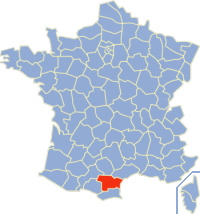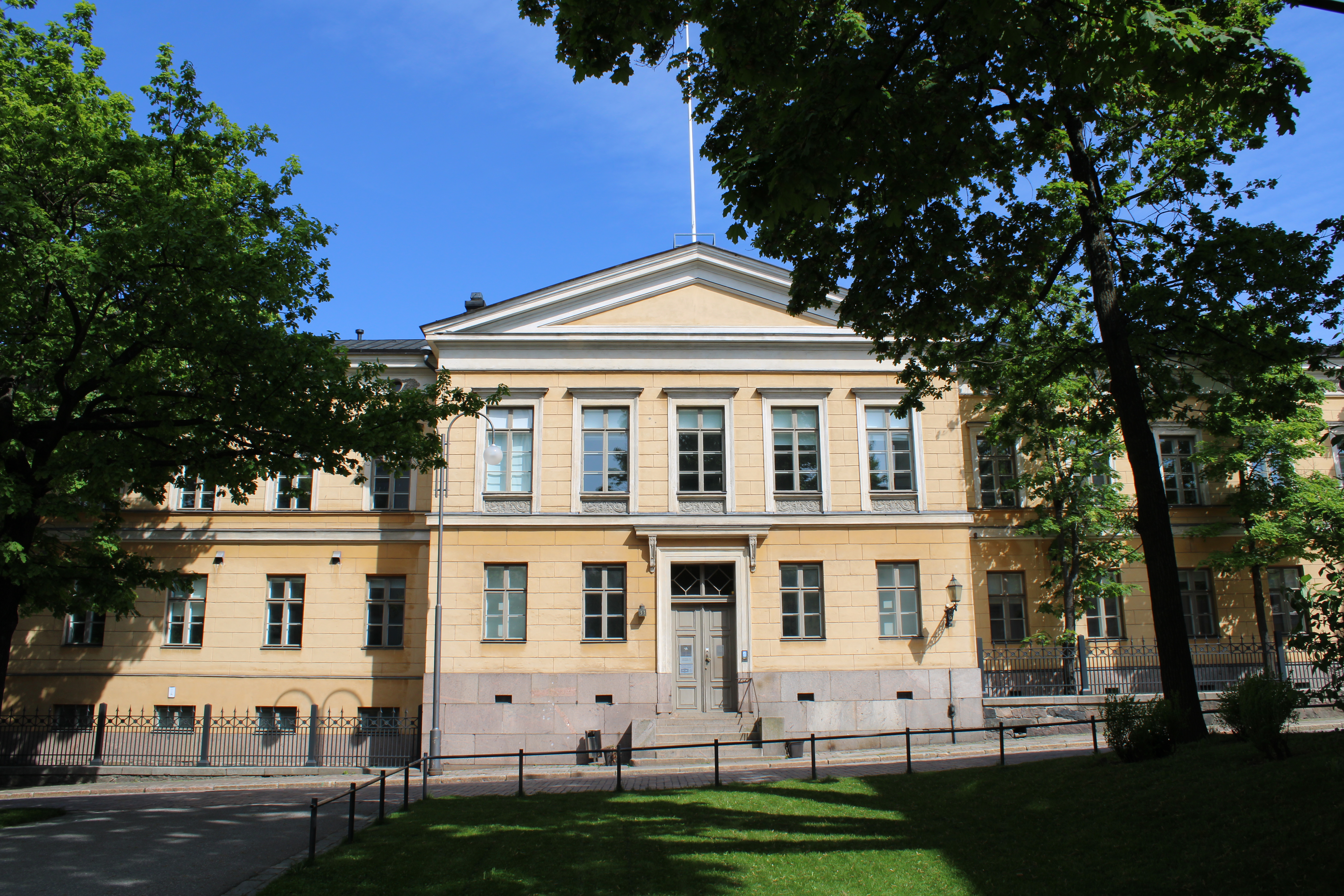|
Albières
Albières (; oc, Albièras) is a commune in the Aude department in the Occitanie region of southern France. The inhabitants of the commune are known as ''Albiérois'' or ''Albiéroises'' Geography ''Albières'' is a remote commune high in the mountains some 40 km south by south-east of Carcassonne and 40 km west by south west of Port-la-Nouvelle in a direct line. The road distance is substantially more. The D129 road running north-west from ''Pont d'Orbieau'' forms the north-eastern border of the commune but to enter the commune the D613 road branches off this road heading south-west to the village of Albières. The D613 continues west through the commune to Arques and is the only access route to the commune. There is quite an extensive network of small mountain roads in the commune. The commune is mountainous with alpine vegetation, no farming areas, and some forested areas. There are many streams flowing through the commune with the Ruisseau d'Albières flowing t ... [...More Info...] [...Related Items...] OR: [Wikipedia] [Google] [Baidu] |
Arques, Aude
Arques (; Languedocien: ''Arcas'') is a commune in the Aude department in the Occitanie region of southern France. The inhabitants of the commune are known as ''Arquois'' or ''Arquoises'' Geography Arques is located in the Pyrénées mountains some 25 km south-east of Limoux and 25 km north-east of Quillan. Access to the commune is by the D613 road from Serres in the west passing through the village and continuing to Albières in the east. The D54 goes north from the village to Valmigère. At the commune border the D70 branches from the D54 and follows a tortuous route to Bouisse. The commune is an alpine commune with rugged terrain but with some farms in the valley. The ''Rialsesse'' river flows through the centre of the commune and the village from east to west gathering many tributaries. In the south the ''Ruisseau de Lait'', with many tributaries rising in the commune, flows north-west into the ''Lac d'Arques'' (Arques Lake) which feeds the Rialsesse. Neighbouri ... [...More Info...] [...Related Items...] OR: [Wikipedia] [Google] [Baidu] |
Communes Of The Aude Department
The following is a list of the 433 communes of the Aude department of France. The communes cooperate in the following intercommunalities (as of 2020):BANATIC Périmètre des EPCI à fiscalité propre. Accessed 3 July 2020. * Communauté d'agglomération Carcassonne Agglo *Communauté d'agglomération Le Grand Narbonne * C ... [...More Info...] [...Related Items...] OR: [Wikipedia] [Google] [Baidu] |
Communes Of France
The () is a level of administrative division in the French Republic. French are analogous to civil townships and incorporated municipalities in the United States and Canada, ' in Germany, ' in Italy, or ' in Spain. The United Kingdom's equivalent are civil parishes, although some areas, particularly urban areas, are unparished. are based on historical geographic communities or villages and are vested with significant powers to manage the populations and land of the geographic area covered. The are the fourth-level administrative divisions of France. vary widely in size and area, from large sprawling cities with millions of inhabitants like Paris, to small hamlets with only a handful of inhabitants. typically are based on pre-existing villages and facilitate local governance. All have names, but not all named geographic areas or groups of people residing together are ( or ), the difference residing in the lack of administrative powers. Except for the municipal arr ... [...More Info...] [...Related Items...] OR: [Wikipedia] [Google] [Baidu] |
Camps-sur-l'Agly
Camps-sur-l'Agly ( Languedocien: ''Camps d’Aglin'') is a commune in the Aude department in southern France. Population See also * Pic de Bugarach * Communes of the Aude department The following is a list of the 433 communes of the Aude department of France. The communes cooperate in the following intercommunalities (as of 2020):Communes of Aude Aude communes articles needing translation from French Wikipedia {{Aude-geo-stub ... [...More Info...] [...Related Items...] OR: [Wikipedia] [Google] [Baidu] |
Soulatgé
Soulatgé (; oc, Solatge) is a commune in the Aude department in southern France. Population See also *Communes of the Aude department The following is a list of the 433 communes of the Aude department of France. The communes cooperate in the following intercommunalities (as of 2020):Communes of Aude {{Aude-geo-stub ... [...More Info...] [...Related Items...] OR: [Wikipedia] [Google] [Baidu] |
Mouthoumet
Mouthoumet (; Languedocien: ''Motomet'') is a commune in the Aude department in southern France. Population See also * Corbières Massif *Communes of the Aude department The following is a list of the 433 communes of the Aude department of France. The communes cooperate in the following intercommunalities (as of 2020):Communes of Aude Aude communes articles needing translation from French Wikipedia {{Aude-geo-stub ... [...More Info...] [...Related Items...] OR: [Wikipedia] [Google] [Baidu] |
Vignevieille
Vignevieille (; Languedocien: ''Vinhavièlha'') is a commune in the Aude department in southern France. Its inhabitants are called ''Vignevieillais''. Geography The commune is located in the Corbières Massif. The village lies on the right bank of the Orbieu, which flows northeast through the commune. Population Sights * Ruins of the Château de Durfort * Fountain built in 1897. The round basin is of pink marble from the Pic de Berles quarry situated in the communes of Vignevieille and Salza. At the centre is a column with the inscription: ''République Française, 1897, Jouve''. The fountain runs permanently, even in drought. See also * Corbières AOC * Communes of the Aude department The following is a list of the 433 communes of the Aude department of France. The communes cooperate in the following intercommunalities (as of 2020): [...More Info...] [...Related Items...] OR: [Wikipedia] [Google] [Baidu] |
Bouisse
Bouisse (; oc, Boissa) is a commune in the Aude department in southern France. Population See also *Communes of the Aude department The following is a list of the 433 communes of the Aude department of France. The communes cooperate in the following intercommunalities (as of 2020):Communes of Aude Aude communes articles needing translation from French Wikipedia {{Aude-geo-stub ... [...More Info...] [...Related Items...] OR: [Wikipedia] [Google] [Baidu] |
Institut Géographique National
An institute is an organisational body created for a certain purpose. They are often research organisations (research institutes) created to do research on specific topics, or can also be a professional body. In some countries, institutes can be part of a university or other institutions of higher education, either as a group of departments or an autonomous educational institution without a traditional university status such as a "university institute" (see Institute of Technology). In some countries, such as South Korea and India, private schools are sometimes referred to as institutes, and in Spain, secondary schools are referred to as institutes. Historically, in some countries institutes were educational units imparting vocational training and often incorporating libraries, also known as mechanics' institutes. The word "institute" comes from a Latin word ''institutum'' meaning "facility" or "habit"; from ''instituere'' meaning "build", "create", "raise" or "educate". U ... [...More Info...] [...Related Items...] OR: [Wikipedia] [Google] [Baidu] |
All Saints' Day
All Saints' Day, also known as All Hallows' Day, the Feast of All Saints, the Feast of All Hallows, the Solemnity of All Saints, and Hallowmas, is a Christian solemnity celebrated in honour of all the saints of the church, whether they are known or unknown. From the 4th century, feasts commemorating all Christian martyrs were held in various places, on various dates near Easter and Pentecost. In the 9th century, some churches in the British Isles began holding the commemoration of all saints on 1 November, and in the 9th century this was extended to the whole Catholic church by Pope Gregory IV. In Western Christianity, it is still celebrated on 1 November by the Roman Catholic Church as well as many Protestant churches, as the Lutheran, Anglican, and Methodist traditions. The Eastern Orthodox Church and associated Eastern Catholic and Eastern Lutheran churches celebrate it on the first Sunday after Pentecost. The Syro-Malabar Church and the Chaldean Catholic Church, ... [...More Info...] [...Related Items...] OR: [Wikipedia] [Google] [Baidu] |
Bal-musette
Bal-musette is a style of French instrumental music and dance that first became popular in Paris in the 1880s. Although it began with bagpipes as the main instrument, this instrument was replaced with accordion, on which a variety of waltzes, polkas, and other dance styles were played for dances. History Auvergnats settled in large numbers in the 5th, 11th, and 12th districts (''arrondissements'') of Paris during the 19th century, opening cafés and bars where patrons danced the bourrée to the accompaniment of the cabrette (a bellows-blown bagpipe locally called a " musette") and often the vielle à roue (hurdy-gurdy). Parisian and immigrant Italian musicians who played the accordion adopted the style and established themselves in Auvergnat bars especially in the 19th arrondissement.Rémi Hess : ''La valse, un romantisme révolutionnaire'', Métailié editor, Sciences humaines collection, April 2003, p. 147-148. ().Henri Joannis Deberne : ''Danser en société'', Christine Bo ... [...More Info...] [...Related Items...] OR: [Wikipedia] [Google] [Baidu] |


.jpg)